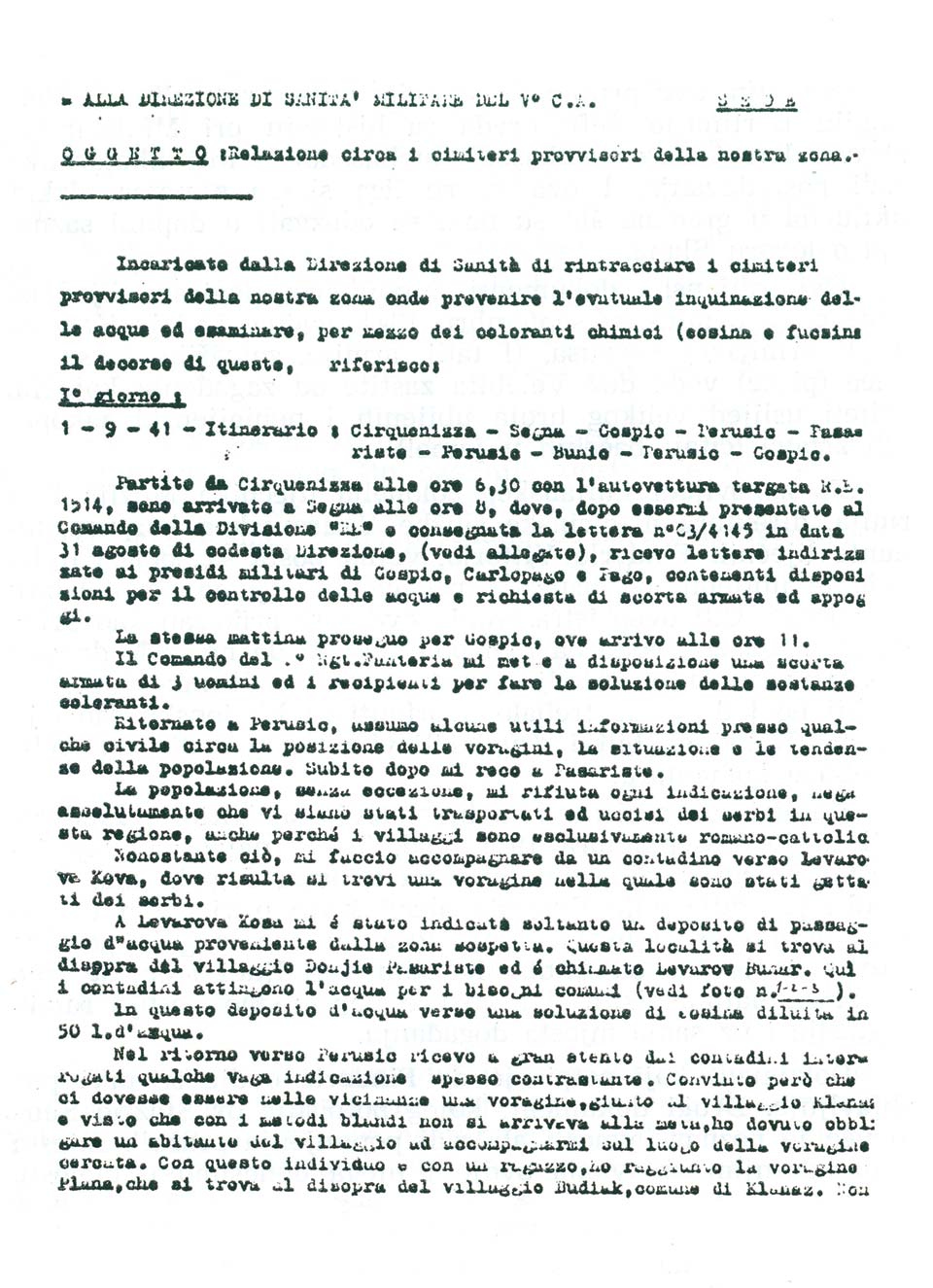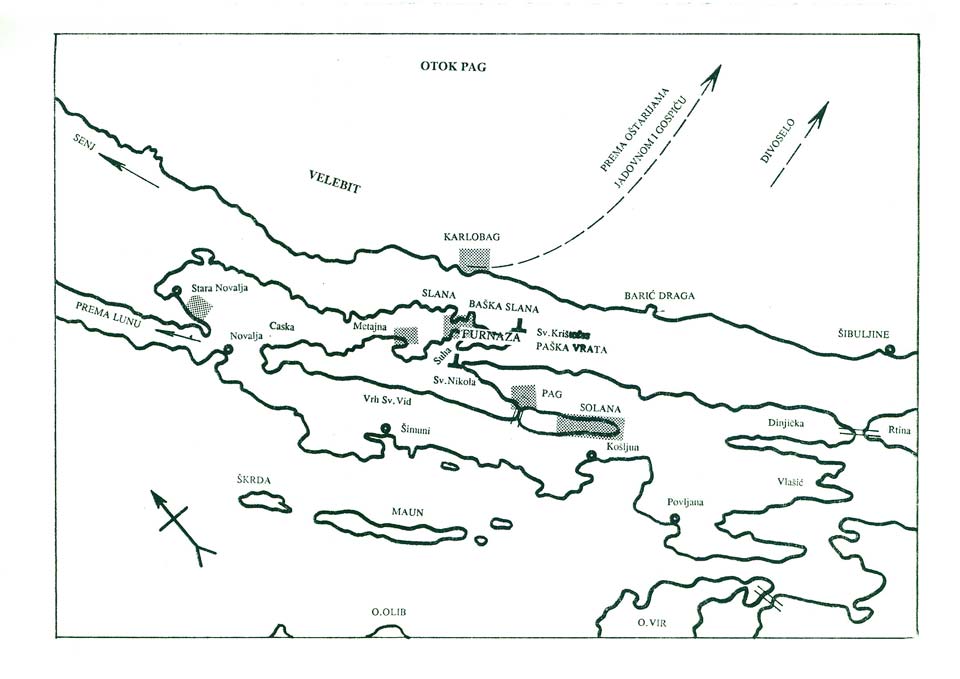
Originalni dokumenti talijanske vojno-sanitetske službe
Tragajući za što vjernijim dokumentima kao i za fotografijama Slane (jer mi one koje posjedujemo daju naslućivati da ih negdje ima još neotkrivenih, pa čak i sa Slani susjednih gubilišta) obratio sam se Ministarstvu obrane republike Italije. Zamolio sam da mi se iz njegovog arhiva presnimi predmet pod brojem koji sam posjedovao. Posredstvom naše ambasade u Rimu dobio sam odgovor iz Ministarstva odbrane pod br. 35722 od 10. VII 87. god. u kojem me šef Ureda obavještava da mi nažalost ne može dostaviti fotografije koje su se u ratnoj pometnji izgubile ali da mi dostavlja fotokopiju sačuvanih dokumenata koji se odnose na slučaj Slane. Koristim ovu priliku da se ovim









